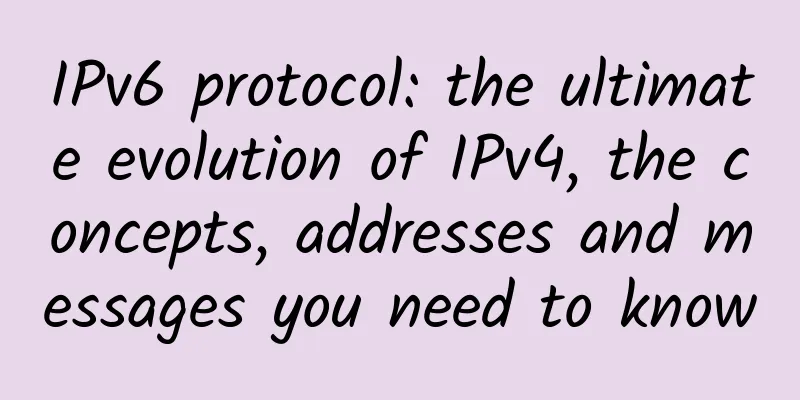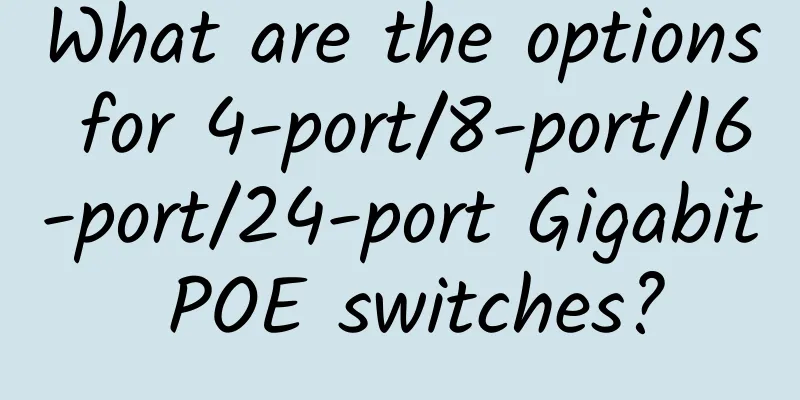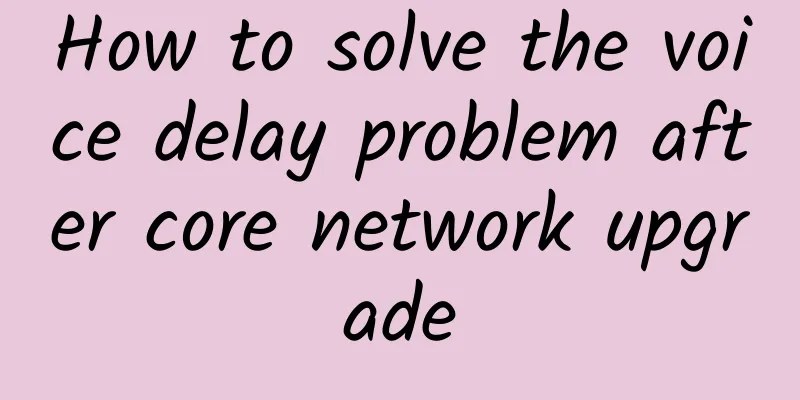IPv6 protocol: the ultimate evolution of IPv4, the concepts, addresses and messages you need to know

|
Hello everyone, I am Bernie, an IT pre-sales engineer. IPv4 has been popular since September 1981. As the fourth version of the Internet communication protocol, IPv4 has been the core of the network layer for more than 30 years. It is a connectionless protocol, that is, the two communicating devices do not need to establish a stable connection channel in advance, the system only needs to select a route for transmission. IPv4 is useful, but with the rapid development of the Internet, the number of connections has increased exponentially. The 32-bit IPv4 can only provide about 4.3 billion addresses (2 to the power of 32, 4294967296). In September 2011, 4.3 billion IPv4 addresses were used up! Thus, IPv6 came to the fore. IPv6 is said to be able to "address every grain of sand on the earth", which sounds a bit exaggerated, but it actually makes sense. Because it is 128 bits long, the number of addresses it can provide is 2 to the 128th power (3.4028237e+38, 256 trillion trillion trillion trillion). IPv6 Development Timeline
Address indicationUnlike IPv4, which uses dotted decimal notation, IPv6 uses dotted hexadecimal notation. The entire address includes two aspects: the network prefix and the interface identifier. The network prefix is the network ID, and the interface identifier is the host ID. IPv6 has three representation methods. ① Hexadecimal systemFormat: x:x:x:x:x:x:x:x, where each X represents 16 bits in the address, expressed in hexadecimal. Example: ② 0 bit compressionIf an IPv6 address contains a continuous segment of 0s, the continuous segment of 0s can be compressed into “::”. Example: AB00:0:0:0:0:0:0:1101 → AB00::1101 ③ Embedded IPv4An IPv6 address can be embedded in an IPv4 segment: the first 96 bits are the v6 address, and the last 32 bits are the v4 address x:x:x:x:dddd Example: ::192.168.10.1 ::FF:169.167.3.1 Address TypeThere are three types of IPv6 addresses: unicast address, multicast address, and anycast address. It should be noted that the broadcast address of the IPv4 address is cancelled in IPv6 and replaced by multicast. Unicast AddressJust like the unicast address in IPv4 address, it is used to uniquely identify a port. Data packets sent to the unicast address will be sent to a port identified by this address. For example, by using unicast address communication, PC1 can uniquely find PC2 in the port under the same switch for communication. Multicast AddressUsed to identify a group of ports. Data packets sent to the multicast address are transmitted to all interfaces identified by this address. For example, using the multicast address method, PC1 can communicate with PC2/3/4 at the same time. Anycast AddressA datagram sent to an anycast address is delivered to the port closest to the source node among a group of ports identified by the address. Note: The distance mentioned here is calculated based on the routing protocol, not the physical length of the address. IPv6 HeaderThe overall structure of an IPv6 message includes a header, an extension header, and upper-layer protocol data. The header includes the following contents as shown in the figure.
1.6. Comparison between IPv6 and IPv4Compared with IPv4, IPv6 is more than just a large number. It has many advantages, such as supporting QoS network quality level, and being able to do route aggregation to improve route forwarding efficiency. A small part of the differences is listed below. SummaryThe above is a brief introduction to IPv6, but it does not cover many technical details, such as IPv6 addressing technology and the important basic protocol ICMPv6. In 2023, Internet technology and IoT technology have developed rapidly. The number of global mobile connections has exceeded 5.5 billion, and the number of IP addresses has exceeded 4.29 billion. Both numbers have exceeded the total number of IPv4 addresses, but for IPv6, this number is not enough. With IPv6, we no longer have to worry about too many connections. The article comes from: IT Yizhichan . If you want to reprint this article, please contact [IT Yizhichan] Toutiao account. |
<<: HPE acquires Athonet to expand wireless connectivity leadership
>>: Development of Multi-core Fiber Connector Technology
Recommend
Three-year pilot licenses have not yet been issued, and the road ahead for virtual operators in 2017 is still difficult
[[177571]] On December 1, the real-name system wa...
The United States has another big move for 5G: agreeing to merge two major operators
The Trump administration has tried every possible...
100G network service acceleration platform T1 GateWare is newly launched
[51CTO.com article] On October 17, 2017, Beijing ...
5G, IoT, edge and cloud: a winning combination
The number of 5G connections is expected to grow ...
The 5G era is accelerating. When will edge computing replace "core" computing?
In the 5G era, the number of connected devices wi...
Traditional database upgrade practices under the cloud-native evolution trend
1. Overview of Cloud Native Databases 1. Cloud co...
Newbie Science: A Brief Discussion on the Changes in Home Router Security
Routers are the entrance to home networks. In the...
European operators can no longer bear the pressure as everyone stays at home. High-speed networks have become a powerful weapon in the fight against the epidemic
Netflix, Youtube, Disney+ and other video sites h...
Great news: Global IPv6 usage rate hits a new high, and my country's IPv6 will be fully popularized
According to Google user statistics, as of June t...
Weibu Online OneDNS helps the real estate industry with network security
If you are the only security manager of a real es...
Detailed explanation: Three technical routes to achieve wide-area deterministic networks
Last time, we introduced the background of determ...
Design of high-density WiFi terminal occupied air interface resources calculation method
In places where high-density WI-FI terminals are ...
Regarding the ocean, we actually have a choice...
There are ten thousand ways for us to live in pea...
Common status codes and usage scenarios in HTTP
Hello everyone, I am the front-end developer. Tod...
Interview Question Series: 12 Deadly Questions on Network
1. What is your understanding of the TCP/IP four-...









